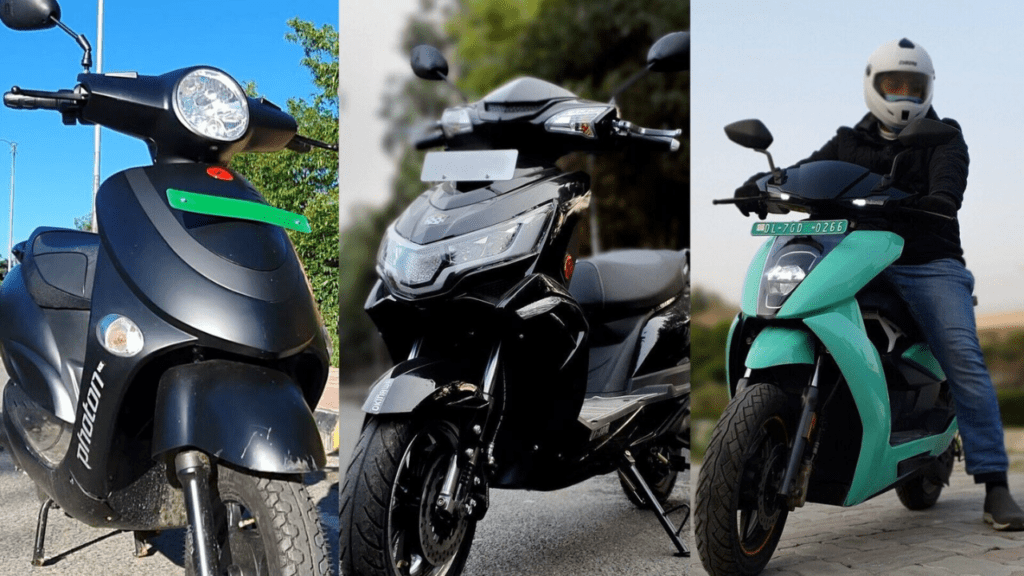India is seeing an exciting transition in its automotive industry towards electric vehicles, or EVs. In this electric revolution, the two-wheeler market has become the leader, with the four-wheeler segment gaining ground slowly.

Increased Sales and Expanded Market Share:
Sales of electric two-wheelers experienced a spectacular jump in February 2024, surpassing 80,000 units. This notable increase is indicative of rising consumer demand for environmentally friendly and sustainable modes of transportation. Leading companies in the e-mobility space, such as Ola, TVS, Bajaj, Ather, and Greaves, are leading the charge with a wide selection of electric scooters that fit a range of needs and price points.
Push from the government and policy tailwinds:
A primary driver of this rise is the Indian government’s dedication to electric vehicles. Financial incentives are vital for manufacturers and customers alike, and initiatives such as the Faster Adoption and Manufacturing of Electric Vehicles (FAME) plan provide just that. This results in appealing incentives for electric motorcycles, increasing their accessibility. Furthermore, regulations encouraging the development of a strong infrastructure for charging EVs help to allay range anxiety, which is a typical worry among prospective customers.
Factors Driving the Electric Vehicle Boom:
Several factors are contributing to the phenomenal rise of electric vehicles in India:
- Cost-Effectiveness: When comparing electric vehicles to their fuel-powered equivalents, the former have substantially lower operating costs. Considering the escalating cost of gasoline, EVs are a highly attractive financial option for regular commuters.
- Environmental Benefits: Electric vehicles are a desirable alternative in light of the growing concerns around air pollution. They contribute to healthier environments and cleaner air because they have zero exhaust emissions.
- Low Maintenance: Since Electric Vehicles have fewer moving parts than conventional internal combustion engine (ICE) vehicles, they require less maintenance. In the long run, this results in significant cost savings.
- Government Incentives: Government subsidies under the FAME initiative, as previously indicated, lower the cost of electric two-wheelers and hasten their adoption.
- Technological Advancements: As batteries get better and require less time to charge, the technology behind them is always changing. This enhances the user experience overall and resolves a significant worry for prospective EV purchasers.
Challenges and the Road Ahead:
Even with the incredible expansion, difficulties still exist. To guarantee smooth EV adoption, charging infrastructure must be expanded throughout both urban and rural locations. Furthermore, encouraging battery swapping stations and guaranteeing that EVs are affordable even without government subsidies are important areas for additional research.
A Bright Future for Electric Vehicles:
There is no denying that the electric two-wheeler business in India has a bright future. Electric scooters have the potential to become the primary means of mobility in India’s cities, thanks to ongoing government support, technological developments, and rising consumer awareness. This change promises a substantial transition towards a cleaner and more sustainable future, in addition to benefits for the economy and environment.
Electric scooters with a multitude of features and enhanced performance, range, and connectivity are being offered by manufacturers who are continuously inventing. Anticipate developments in areas such as quick charging capabilities, smart features integrated into smartphones, and battery technology. New startups and well-established firms from the traditional two-wheeler market are drawn to the electric vehicle (EV) market. Customers gain from this healthy rivalry by having more options available at affordable prices.
In order to alleviate range anxiety problems, battery swapping stations provide a practical substitute for conventional charging. In order to create reliable battery swapping networks, keep a watch on collaborations between manufacturers and suppliers of charging solutions. Novel approaches to ownership, such as electric two-wheeler subscription plans, are becoming more and more popular. Because of their price and flexibility, these plans may draw in a new customer base.
For more updates, keep an eye on www.headlineocean.com

